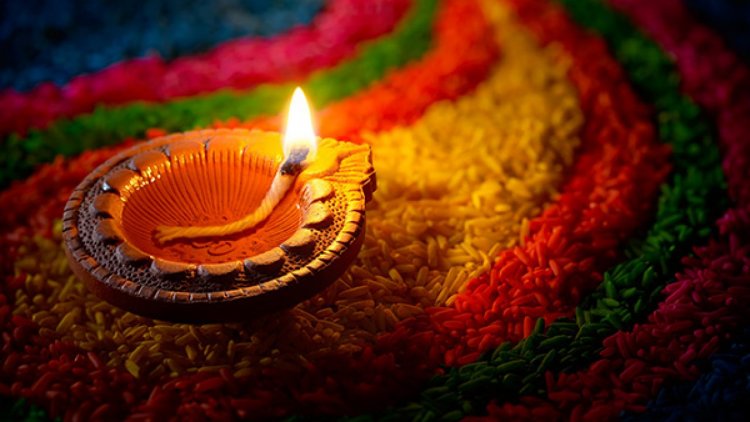Diwali Cleanliness: An Integral Part of The Festival of Lights

Diwali is one of the most important Hindu festivals celebrated in India and among the massive Indian diaspora worldwide. Known as the festival of lights, it takes place over five days and has varying customs depending on what part of India you’re based in. In Odisha, it is preceded by Lakshmi Puja and Dhanteras.
Also known as Deepavali, meaning ‘row of lights’, it celebrates the triumph of good over evil, a recurring theme in the Hindu epic ‘Ramayana’ which tells the story of Lord Rama and his 14 years of exile and return to his kingdom. But the worship of Lakshmi, the goddess of wealth, is also a dominant Diwali tradition. It falls on the darkest night of the Hindu calendar, ‘Kartika masa’, which is usually between mid-October and November and coincides with the Hindu New Year.
Apart from the decorations, pujas, and the ever-popular but controversial use of fireworks, there is one aspect that is generally overlooked– cleaning and decluttering! Deep cleaning of our houses for Diwali has been an age-old custom. But what is the significance of the custom?
Welcoming Lakshmi, the goddess of wealth
Many of us are aware of the belief that Goddess Lakshmi will grace the clean and nicely decorated home with wealth and fortune. So, in the southern part of India, it is a ritual to clean the house and garnish it with lights and flowers with special Lakshmi puja during this period.
Welcoming Guests as an Athithi to participate in Diwali celebration
In a few parts of Karnataka, on the day of Naraka Chaturdashi, it is a ritual to visit each other’s home for Aarati to mark the welcome of Krishna by the people of Dwaraka. As a part of the Diwali celebration, a neat and clean home ensures the warm welcome of your guests. As a popular Sanskrit saying goes, ‘Athithi Devo Bhava’ meaning to treat guests as God has a ceremonial connect to it.
Diwali as a New Year
Diwali is also considered to be the last day of ‘The King Vikram’ calendar with next day to be the start of a new year. Eventually, people will clean their house to welcome the New Year and get their home ready for Diwali celebration. So as a ritual and sanitation, it becomes essential for us to clean our house. Here are a few quick tips to clean your home for Diwali:
- Dispose of unwanted and unused materials from home. They only occupy more space and make the area look messy.
- Give away your old clothes to the poor or needy to make more space in your wardrobe for the new clothes that you buy for the festival.
- Give special attention to unnoticed corners. Usually, more dust will be accumulated there. Wipe or use a vacuum cleaner to clean the area.
- If you have plans to paint your home for Diwali, then ensure to cover your furniture and home appliances to avoid paint stains on them.
- Basic cleaning is required from- mopping, floor scrubbing, and bathroom cleaning to make your home space free from dust.
Once you are done with this, you would replace sofa covers, curtains, pillow covers and drapes in your rooms and living area. Adding on, keep insect repellents in the room corners and use air fresheners and scented methanol to have that fresh aroma to stay in for a longer period.
While we are on this topic of cleansing, it would be unfair to not address the bigger issue here: the pollution caused due to crackers. While we are concerned about cleanliness in our homes, it is equally our responsibility to keep our surroundings and environment clean!
Earlier, it was celebrated with diyas but slowly it took the form of lights, lighting lamps, candles and crackers. Nowadays, people burn dangerous firecrackers limitlessly. Crackers have a big hand in polluting our environment. The toxic substances used in the firecrackers release toxic gases that are harmful to the health of all living beings.
The red and bright glare of the rockets and other crackers lighting up the dark moonless night of Diwali may be a sight to behold, but it also fills the air with toxic pollutants. The very ingredients that make the firecrackers attractive on being lit are some of the most toxic metals and chemicals.
When burned, the firecrackers emit toxic pollutants, particularly sulphur dioxide (SO2), carbon dioxide (CO2), carbon monoxide (CO), and particulate matter (PM) along with several metallic compounds, which not only have a detrimental effect on air quality but also pose serious health risks, particularly to people suffering from respiratory diseases.
Right from the gunpowder that fuels the flight of a noisy rocket to the metal that gives out the colourful sparkles during the fireworks, everything releases a large amount of harmful air pollutants. That is why Delhi’s top doctors declared air pollution as a public health emergency and urged people to not burn firecrackers and celebrate a green Diwali. Here’s how the different metals and chemicals used in making firecrackers can affect your health:
Lead: When heated emits highly toxic fumes that affect our brain and nerves. “Children can suffer developmental delays and learning disabilities by long exposure to lead,” said Dr Sameer Gupta, Vascular Medicine.
Magnesium: Inhalation of magnesium dust and fumes can cause a condition called metal fume fever, which is a flu-like fever that can cause chills and muscle weakness.
Zinc: Otherwise not toxic in nature but can emit toxic fumes on burning and cause metal fume fever among people exposed to these fumes.
Manganese: Manganese dust and fumes can cause lung irritation, muscle rigidity, tremors and even paralysis.
Sodium, Potassium and Copper form toxic gases on burning, which leads to irritation and can cause coughing, burning sensation and difficulty in breathing.
Cadmium fumes when inhaled over a period of time get deposited in the body, causing damage to the liver and kidney. It can also make the bones brittle, which can cause fractures.
Phosphorous in the form of phosphate is poisonous when inhaled, ingested or even through skin contact. “The amount inhaled over a period of time affects the brain, causing headache, depression and affects concentration. It can also cause severe eye damage and affect the liver in the longer run,” said Dr Sonia Lal Gupta, Neurologist.
Sulphur in the form of sulphate irritates the airways and lungs, causing swelling and inability to breathe. It can also cause a burning sensation and irritate the skin.
Nitrates and nitrites: Both emit toxic fumes on burning and cause weakness, abdominal pain, convulsions and even coma if a person is exposed for a longer duration.
“Fireworks can be harmful to your brain, liver, heart, kidney, skin and pretty much every organ of your body. Please opt for a green Diwali and say no to burning firecrackers,” urged Dr Gupta.
The noise of the crackers causes immense suffering to birds and animals. Diwali is the festival of lights and not burning off the limitless crackers which take the form of air and noise pollution. We should minimize the use of firecrackers during Diwali celebrations and other celebrations. We must take steps to make ourselves and others aware to put an end to noise through rallies and hoardings.
Now, more than ever; we must also make each other aware of the harms of the pollution caused by the firecrackers that lead directly or indirectly to global warming.
Here are a few ways to celebrate Diwali the eco-friendly way:
Earthen lamps
During Diwali shopping, there are all sorts of Diwali lights and diyas which are there for us to buy. However, instead of these opt for earthen diyas. Hanging them in various places around the house gives your house a very earthy and elegant feel. Ditch those over the top electric decor items and go classic with earthenware for Diwali decorations this year and stand out.
Rangoli
As Rangoli is an integral part of the Diwali decorations, opt for organic colours instead of those with damaging chemicals. While making rangoli designs, try to use natural colours. You can also use flower petals to add to your Rangoli’s design and textures. These are environment-friendly, and your home will really stand out in terms of decor as compared to the same busy Diwali decorations. Also, the concept of using fresh flowers and fruits in your rangoli designs is quite exciting!
Jute Bags
Stop using those plastic bags which you have been collecting in your house over the last few months and instead get yourself some jute bags which you can carry around for your shopping. They look and feel better and of course, are much better for the environment.
Decorating Your House
You can use old sarees to decorate the walls and once you get into the mode, a lot of other ideas to decorate your house shall start coming to you. Fresh Marigold, Rose and Rajnigandha garlands can also add an experiential element to the décor, and it will keep your home fragrant and fresh amid all the smoke from crackers.
Cutlery
Diwali means a lot of house parties-both hosting them and attending. During these moments, since there are too many dishes which would have to be washed, many of us go for disposable plates, which are not good for the environment. Instead of this, you should opt for biodegradable plates and glasses this time which are friendly for the environment and at the same time easy to dispose of. Banana leaf plates, Bamboo plates are a good pick for those festive feasts.
So, here’s the team of Apeksha News Network wishing all a happy and environment-friendly Diwali!















































